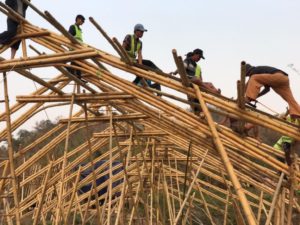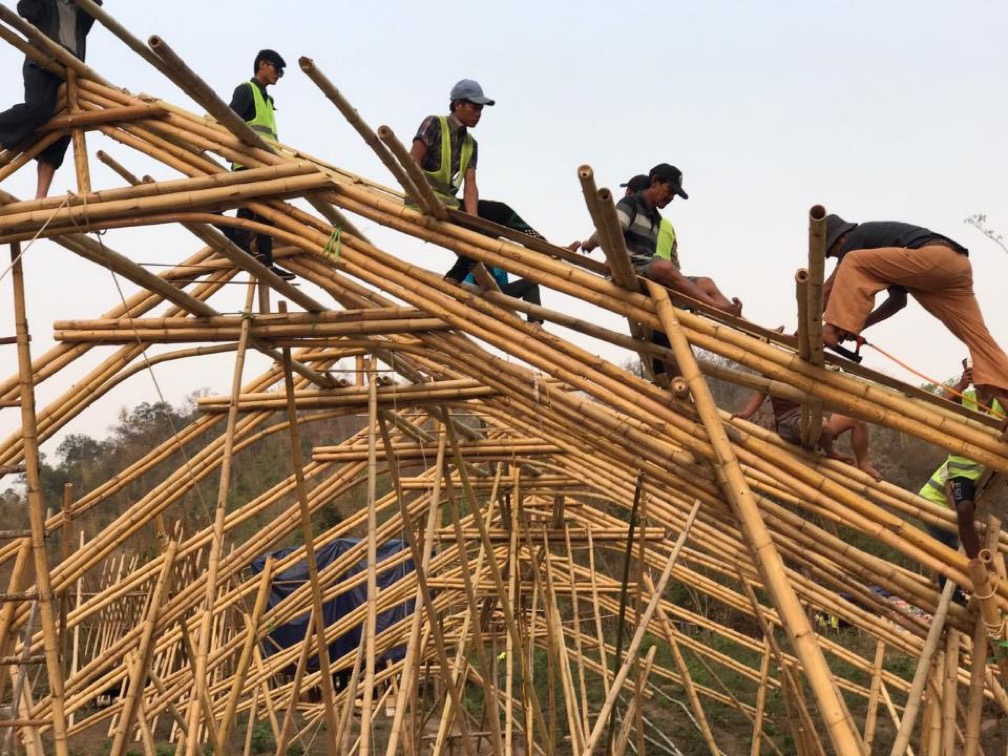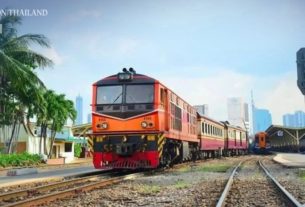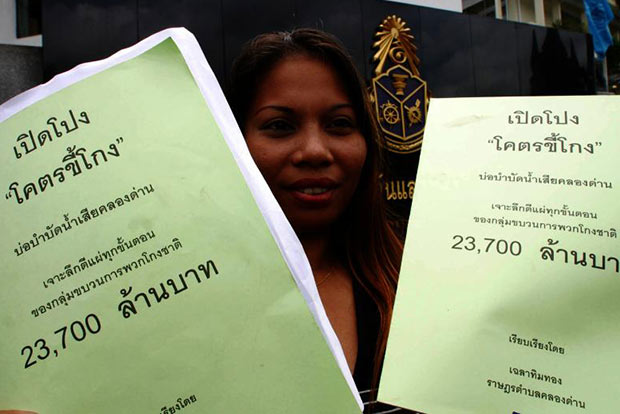 Myanmar’s Pounamu Design and Construction is building a sustainable bamboo practice
Myanmar’s Pounamu Design and Construction is building a sustainable bamboo practice
19 September 2019
As a bamboo design and construction company, Pounamu’s business relies on the supply of bamboo. So in 2017, the company thought: How can we make the business more sustainable?
The answer lies in training communities on sustainable bamboo forestry, treatment, and construction.
“Actually the bamboo is a sustainable material in itself, but … we [should care] and … [be] good [in] managing and taking the bamboo from the forest,” Pounamu Operations Director Soe Win Zaw told Devex at the 7th Asia-Pacific Housing Forum in Bangkok.
Bamboo technology in the housing sector isn’t new, but Pounamu’s work with the community on sustainable and productive practices in the sourcing and utilization of bamboo has earned the company the first Asia-Pacific Housing Forum Innovation Awards in the category of community initiatives and spatial planning. The innovation awards are initiated by Habitat for Humanity with support from the Hilti Foundation and the Cities Alliance.
 How can we achieve each individual’s right to decent and affordable housing in today’s urban setting? Habitat for Humanity weighs in.
How can we achieve each individual’s right to decent and affordable housing in today’s urban setting? Habitat for Humanity weighs in.
While bamboo is in abundance in Myanmar, only bamboo culms that have reached a certain maturity should be used for construction, Zaw said. Bamboo culms that have reached the ripe age of between 3-5 years of age are the strongest. Younger culms need time to reproduce, while culms older than 5 years of age lose their strength.
This knowledge is important to impart to communities that have access to the forests and from whom Pounamu sources its bamboo supply. The right bamboo treatment process also helps protect the poles from insects and other forms of fungus.
Meanwhile, the company realized the while it builds and delivers bamboo structures in the hotel and restaurant industry, the communities from which it sources the bamboo materials have limited knowledge and know-how in bamboo construction.
The company trained communities in how to harvest the bamboo, clean it, cut it, where to cut it, and even in determining its age. The knowledge and the skills the community gains from the training helps open up job opportunities while giving them the power to properly construct their own homes using bamboo materials. Bamboo houses cost an estimated $4,000 — 30% lower than houses made of timber, Zaw said.
To date, the company has trained 180 bamboo farmers in six communities across the country.
But it wants to take a slightly different approach and target the training to those who are really interested. Some people undergo training but never make use of the knowledge and skills the company has provided, Zaw said.
The training incurs costs and can be time-consuming: “We have our training, [but] if you don’t provide a daily wage, [the trainees] cannot come. So if the funding is not included, [it is] difficult to find the right people to come [and] teach them,” Zaw said.
The training lasts for about 16 days — three days for sustainable bamboo forestry, three days for bamboo treatment methods, and an estimated 10 days for bamboo construction. But Zaw said the training process takes six months minimum and involves partical work in the community. Some training also requires working with the community beyond the allotted number of days. For example, construction can take as much as three months.
Another challenge the company encountered is getting farmers on board on sustainable bamboo sourcing.
“To be honest, it is difficult to teach them, because … [if they] cut the bamboo, [they get] $5 per pole for example … [they] don’t want to do other things like cleaning, [because it takes] effort,” he said.
So the company devised a coding system wherein it teaches bamboo farmers to mark bamboo culms. For example, if farmers cut the bamboo in 2019, they mark the remaining stalk with the year 2023. This means that bamboo can only be cut again that year.
Not only does this help make it easier for farmers to identify a bamboo’s age, but also helps the company ensure that it’s only sourcing age-appropriate and sustainable bamboo materials.
“We have a regular supplier, so we are pushing them to [use the coding system]. Otherwise, we will not buy from them,” he said.
Source: https://www.devex.com/news/how-this-company-is-building-sustainable-bamboo-practice-in-myanmar-95647


